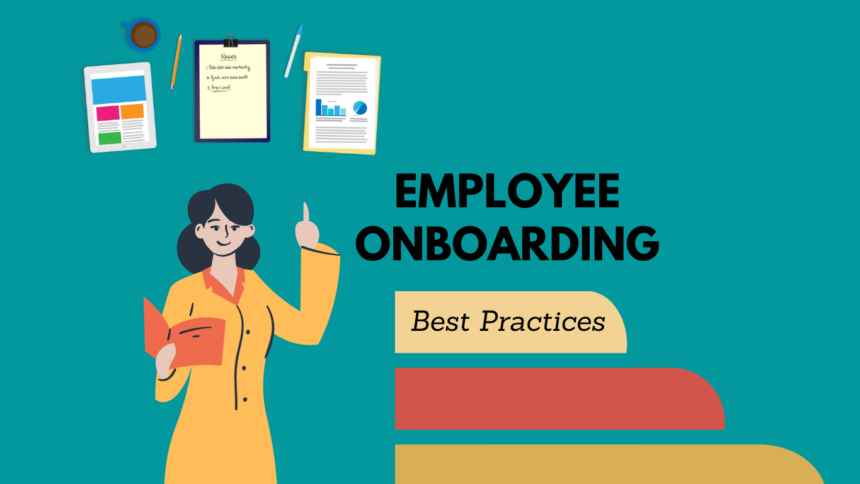Introduction to Onboarding
Employee onboarding is an essential but often underestimated component of the employee experience. It encompasses everything from paperwork and training to mentorship and social integration. Companies can significantly enhance their new hires’ productivity and satisfaction levels by investing time and resources in a structured onboarding process. With tools like new hire onboarding software, organizations can automate mundane tasks and allow managers to focus more on building relationships and fostering a welcoming environment.
Beyond basic logistical arrangements, onboarding should be the first opportunity to instill your company’s values and culture. A well-designed onboarding process saves money by reducing turnover, builds morale, and encourages engagement from day one. When new employees feel valued and understood, they’re more likely to invest in their roles and contribute positively to the company’s objectives.
Importance of a Structured Onboarding Process
A structured onboarding process is a roadmap for new entrants, guiding them through company operations, expectations, and culture. By clearly outlining responsibilities and workflows, companies can prevent confusion and minimize the time it takes for new hires to become productive. Studies indicate that organizations with a structured onboarding system saw a 62% increase in new hire productivity and a 50% improvement in retention rates. These statistics highlight the vital role onboarding plays in shaping the overall employee lifecycle.
Moreover, the structured approach helps new employees transition into their roles, reducing stress and misunderstandings seamlessly. It enables them to grasp their duties, understand team dynamics, and learn the company’s mission and vision. As a result, new hires are more equipped to perform at their best, positively impacting team performance and company goals.
Key Elements of Successful Onboarding
- Pre-boarding Communication: Initiating contact with employees before their official start date sets a positive tone and helps resolve any preliminary questions. This stage can include having managers or team members send a welcome message, providing access to an employee portal, or scheduling introductory meetings.
- Clear Role Definition: An essential component of onboarding is ensuring that new hires understand their specific roles and responsibilities. This clarity helps prevent confusion and allows employees to focus their efforts where they are most needed. Providing detailed job descriptions and setting initial goals can greatly assist in achieving this understanding.
- Training and Development: Offering continuous training opportunities ensures employees are constantly upskilling and contributing more effectively. Training shouldn’t be a one-time event but a continuous effort to enhance employee skills and productivity.
Common Challenges in Onboarding
While onboarding is crucial, it is often fraught with challenges. Organizations may need to match expectations between new hires and management, inadequately designed training programs, or insufficient follow-ups that hamper the onboarding flow. These issues can demoralize newcomers and lead to disengagement.
Companies must ensure that the responsibilities and expectations are clearly defined and communicated effectively to counteract these challenges. Regular feedback and check-ins can address misunderstandings early and adjust onboarding approaches. This proactive involvement by managers ensures sustained engagement and alignment with organizational objectives.
Tools and Technologies
Adopting the right tools can revolutionize the onboarding experience for employees and employers. By leveraging advanced onboarding software, companies can automate administrative tasks, streamline document handling, and optimize communication channels. Such tools help ensure that every new hire receives consistent and relevant information across different departments and locations.
These technologies also facilitate smoother collaboration between HR and department heads, helping them monitor onboarding progress, gather insightful metrics, and continuously improve the process. Incorporating AI-driven insights can further personalize and innovate the onboarding journey as technology evolves.
Measuring Onboarding Success
Companies must have quantifiable metrics to evaluate onboarding programs’ success. Key performance indicators (KPIs) such as time-to-productivity, turnover rates, and new hire satisfaction scores offer valuable insights. These metrics provide a framework for assessing how effectively the onboarding process meets its intended goals.
Regularly soliciting feedback from new employees through surveys and one-on-one discussions adds depth to your evaluations. Such dialogues encourage open communication, allowing new hires to share their onboarding experiences and suggest improvements. This feedback loop is essential for refining onboarding practices to align with evolving business and employee needs.
Future Trends in Onboarding
The future of onboarding is poised to embrace personalization and cutting-edge technology. With AI-driven solutions, companies can customize the onboarding experience by adapting it to individual employees’ needs and preferences. These technological advancements will facilitate deeper engagement, allow for more accurate tracking of onboarding success, and enable faster integration of new hires.
Moreover, the rise of remote work has pushed organizations to rethink traditional onboarding processes. Virtual onboarding strategies will likely become more prevalent, offering flexibility and accessibility for geographically dispersed teams. Continuous feedback mechanisms will be crucial in shaping dynamic and responsive onboarding experiences, further enhancing new hire satisfaction and long-term retention.




